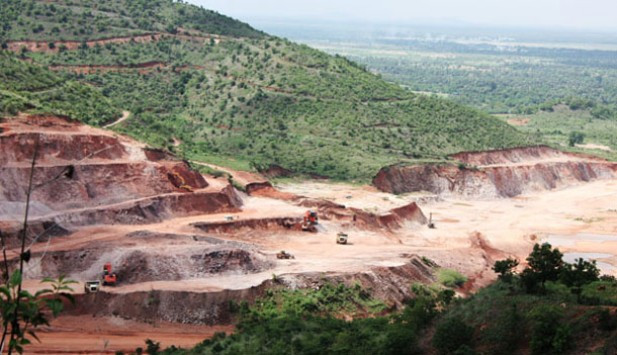Another storm of the Monywa mine controversy
Published: Oct 1, 2013 Reading time: 2 minutes Share: Share an articleThe last September day is a deadline set for farmers living in the immediate vicinity of the Letpadaung copper mine in Monywa District to surrender their land in exchange for compensation from the government. Even though there is a threat of arrest in case of not accepting the deal, more than 60% of the local population refuse to accept the dictated terms and surrender their land. In total, it concerns 26 villages that work the land of 6,900 acres which are to be confiscated. A relaunch of suspended mining operations has already been scheduled for the beginning of October. According to independent Burmese media, a not-too-distant future might bring another storm of violence the region has been suffering from for almost three years.

The Monywa mine dispute has dragged on already since 2010 when some 7,800 acres of land were confiscated in the area with an aim to prepare for mining operations, in addition to that other pieces of ground were contaminated with chemicals used for mining. The following year was marked by the first protests; local inhabitants actively opposed not only the confiscation scheme, but also severe environmental pollution which ruins farming in particular areas, and thus deprives the people of their source of livelihood. Gradually, the protests spread also throughout a part of the monk community, and some demonstrations took place even in Rangoon. The tension escalated in November when the police ruthlessly suppressed the demonstration while using grenades containing white phosphorus, a flammable warfare gas causing burns, which seriously injured more than 50 protesters. Consequently, while mining operations were suspended, the government created a commission chaired by Aung Shan Suu Kyi with the aim to investigate environmental, social and economic impact of the expansion of mining operations. In March 2013, the commission recommended to continue implementing the project, however Suu Kyi proposed the compensation be increased for those farmers who have to surrender their land.
Current charge per unit, i.e. a surrendered acre, ranges from 1,200,000 to 1,500,000 kyats (23,000 – 30,000 CZK); yet most farmers claim that they are able to make up to 700,000 kyats (14,000 CZK) per one year of farming, and thus the compensation is too low. In July the government managed to negotiate a deal with other owners (Chinese company Wanbao and the UMEHL, a military conglomerate the Union of Myanmar Economic Holdings) which guarantees better profit sharing ratio so that the farmers’ land can be compensated for. Now, the government’s profit should grow to 51%.
Sources: www.rfa.org, www.irrawaddy.org, www.burmapartnership.org, www.mmtimes.com, www.uscampaignforburma.org, www.theworldoutline.com
See also other Burmese news.
